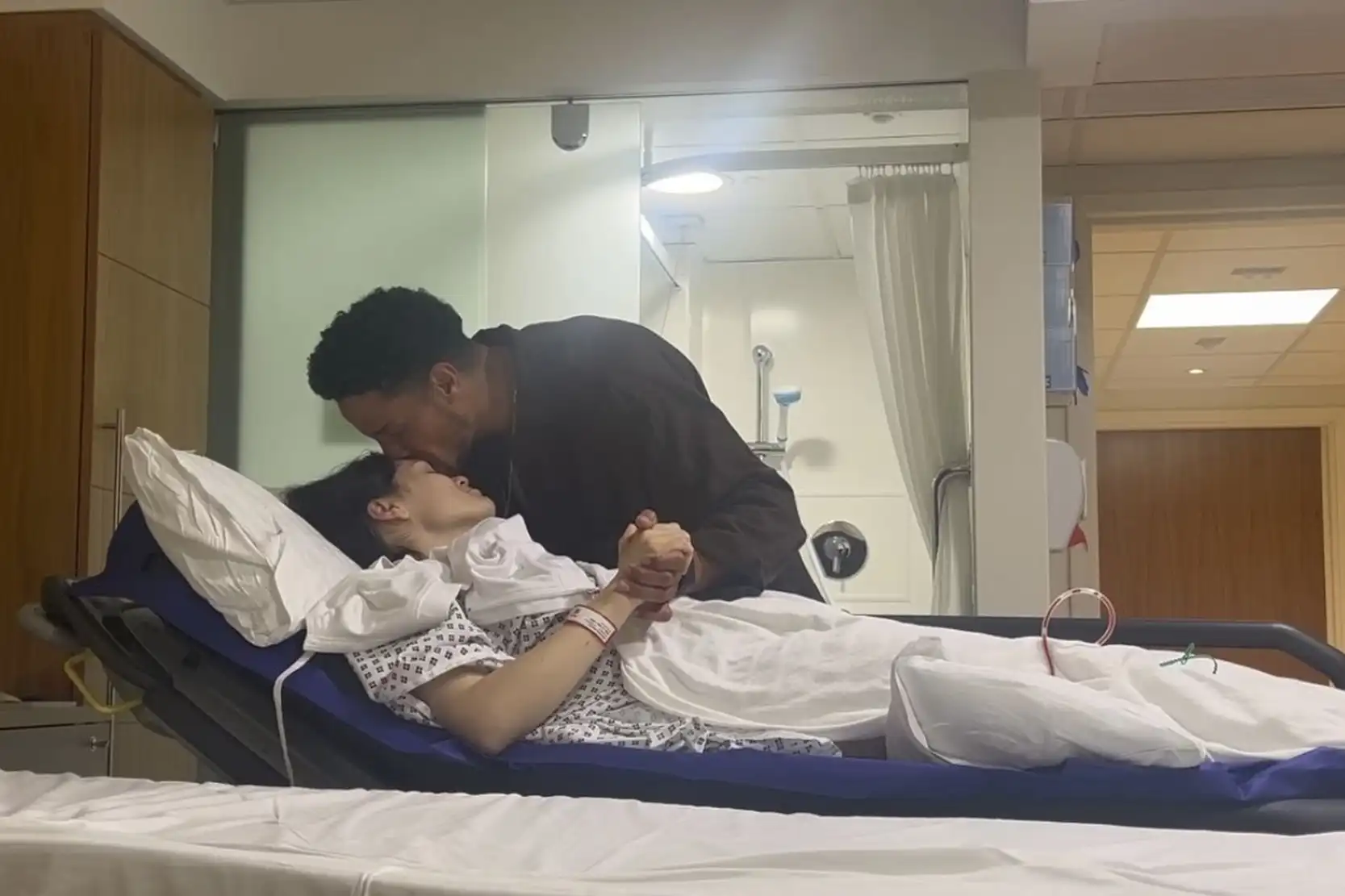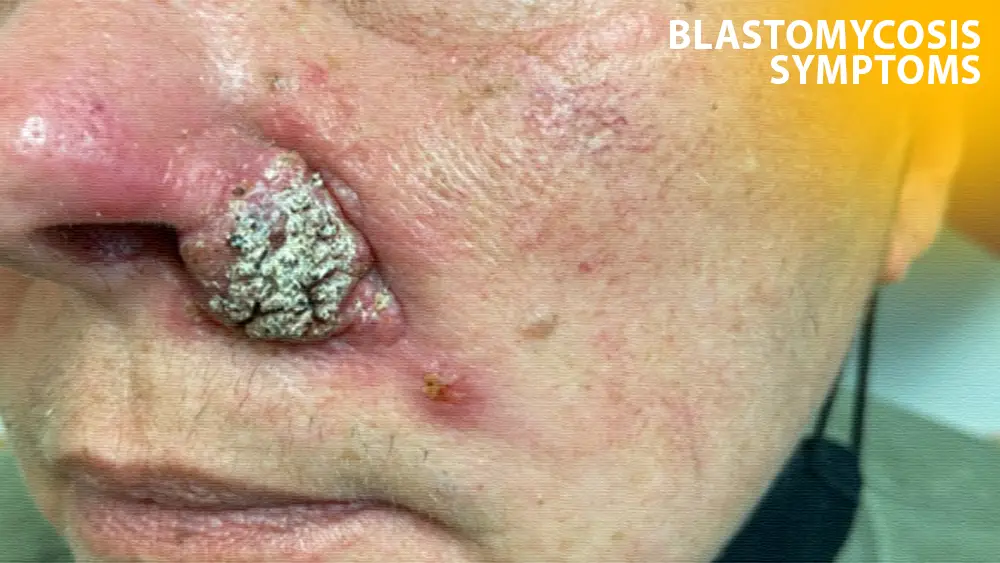
HEALTH NEWS
Explaining Blastomycosis Symptoms: Medicine, Signs and Management
-
Rahul Priydarss
E
xplore comprehensive insights into Blastomycosis Symptoms, including respiratory, skin, and systemic manifestations. Learn about diagnostic procedures, treatment options, prevention tips, and more. Stay informed and prepared to recognize and manage this fungal infection effectively.

Table of Contents
Understanding Blastomycosis Symptoms:
Blastomycosis is a very serious fungus infection formed by the fungus Blastomyces dermatitidis, This is commonly found in soil, Fertilisers, and particularly in areas with decomposing organic matter like wooded areas and along Beaches or riverbanks. But not everyone exposed to the fungus develops symptoms, Blastomycosis Symptoms only develop in those who can experience a range of expressions and then affect various organs and organ systems in the human body.
Look Up of Blastomycosis Symptoms:
if anyone suffers from Blastomycosis and shows any sign of Blastomycosis Symptoms first affect the lungs when inhaled but also spread to other organs or parts of the body, including skin, bones, kidneys, glands, and other organs, through the blood. and The severity of Blastomycosis symptoms can vary widely from Miner to severe, in some cases, this infection is very dangerous and can be life-threatening if not properly diagnosed and treated. i.e. I already told to everyone first go to a registered medical practitioner like MBBS, MD, or DM doctors only.
Some Common Symptoms of Blastomycosis:
Common symptoms of blastomycosis can mimic other respiratory or systemic infections. Diagnosing it has become challenging. However, some common symptoms like:
- Cough
- Chest Pain
- Difficulty In Breathing
- Cough: some patients suffer from a productive cough or Persistent cough that may produce thick, and some patients suffer from bloody sputum while coughing.
- Chest Pain: If you facing a cough for a long time then causes Chest discomfort or pain, especially with deep breathing or coughing At that time you start feeling short of breath and having difficulty breathing. If you do any work then you start feeling short of breath.
- Difficulty In Breathing: Shortness of breath, especially with exertion. It has been said that when you do any work or cough, excessive coughing causes difficulty in breathing, but when the infection becomes severe, then difficulty in breathing starts.
Other Common Blastomycosis Symptoms:
Apart from respiratory symptoms, there are other symptoms that a patient may notice. Blastomycosis may also present with less common manifestations:
- Skin Symptoms
- Systemic Symptoms
1. Skin Symptoms:
- Skin Lesions: Painful, raised bumps or lumps on the skin that may resemble warts. Or a very dirty fungus-like lesion appears which also itches.
- Skin Ulcers: Open wounds or ulcers that develop on skin lesions. Which is very dirty and causes trouble to the patient. Widespread Rash: General rash that may itch or be painful. Rest, I also told that there is itching in it and if the itching is severe then you can get bleeding from the wound by removing the itch and that infection can also occur at other places.
2. Systemic Symptoms: This disease or problem of blastomycosis can also cause systemic symptoms indicating more widespread infection, such as:
- High Fever: Causes high fever which may be manifested by chills and sweating.
- Chills: Shivers or chills, are often accompanied by fever.
- Fatigueness: Extreme fatigue or weakness that interferes with daily activities and normal work.

Diagnostic Procedures of Blastomycosis:
Diagnosis of blastomycosis requires a combination of clinical evaluation, laboratory testing, and imaging studies. All our specialist doctors, pharmacists, health workers, or healthcare providers can perform the following diagnostic procedures:
- Lab Test
- Imaging Studies
1- Lab Tests:
- Microscopic Examination: Our specialist doctors and specialist pathologists in microscopic examination of respiratory or pulmonology, have taken tissue samples, or body fluids to find and identify the specific yeast-like fungal cells of Blastomyces dermatitidis infection.
- Culture Tests: The Culturing samples on special fungal growth media to isolate and find the appropriate fungus causing the infection.
2- Imaging Studies:
- Chest X-ray: Chest palpation to evaluate for abnormalities such as infiltrates and nodules in the lungs.
- CT Scan: Detailed imaging of the chest or other affected areas to assess the extent of infection and rule out complications.
Treatment Options for Blastomycosis:
Treatment of blastomycosis usually involves antifungal medications to eliminate the fungal infection. Depending on the severity of the infection and the organs involved, treatment may include and the treatment process may vary according to the doctors or healthcare advisers for giving the anti-fungal, antibiotics, antiallergic, analgesic medicines:
Antifungal Medications:
- Itraconazole: Oral antifungal medication commonly used as first-line therapy for mild to moderate blastomycosis.
- Fluconazole: They are also given orally and this medicine is available in tablet form or depending on brand.
- Albendazole: They comes in suspension and tablet form and are taken according to the physician.
- Amphotericin B: Intravenous antifungal medication is reserved for severe and disseminated infections or those resistant to other treatments.
Antibiotics Medication:
- Levofloxacin: They are broad spectrum H1 category medicine and very effective in the primary stage.
- Amoxicillin: This medicine has been used for a very long time and is a very good medicine, but now some resistance towards it has started appearing, so doctors now prescribe better antibiotics to the patients.
- Cephalexin: This medicine is given to the doctor even when the patient’s condition has become the worst, then they have been told about it, or when their condition has become the worst.
- Moxifloxacin: This claim works very well for those who suffer from a chest infection or severe cough. The doctor gives 200mg and 400mg doses to the patient along with Levofloxacin medicine and then its results are very good and the patient gets relief from the cough the next day. One can get relief from this also.
Antiallergic Medication:
- Levocetirizine
- Cetirizine
- Bilastine
- Ebastine
Analgesic Medicine:
- Aceclofenac
- Ibuprofen
- Diclofenac+Paracetamol+Sarritopeptidase
- Trypsin-Chymotrypsin+Aceclofenac+Paracetamol
- Aceclofenac+Paracetamol+Sarritopeptidase
When Go for Hospitalization:
In severe cases of blastomycosis, hospitalization for close monitoring and administration of intravenous antifungal drugs may be necessary. Because if you have a severe infection then you will be better off in the hospital.
Few Tips For Prevention:
Preventing blastomycosis includes minimizing exposure to the fungus in outdoor or endemic areas and taking many precautions when engaging in outdoor activities. and more tips include:
- Avoiding High-Risk Areas: Limiting exposure to wooded or damp areas where the fungus is likely to thrive.
- Use Protection: Wear gloves, long sleeves, and masks when handling soil or engaging in activities that may aerosolize fungal spores.
- Awareness of Symptoms: Everyone must be aware of the symptoms of blastomycosis and if anyone feels seek then must go for medical help immediately if symptoms develop.
Blastomycosis in Animals:
Blastomycosis infection can also affect animals, pets, and especially dogs, which may develop the same type of respiratory and other symptoms. You know Humans can acquire infection from infected animals or pets through respiratory secretions or contact with contaminated soil.
Public Health Importance:
Blastomycosis infection is a significant public health issue in many areas, spreading rapidly in many areas, where outbreaks may occur sporadically. Health officials monitor and investigate cases to identify sources of infection and implement control measures to prevent further spread.
Complications:
Blastomycosis can cause many complications to humans and animals or pets, especially in cases of untreated infection, and may include:
- Chronic Blastomycosis: Persistent or recurring symptoms despite treatment for the disease
- Disseminated Blastomycosis: The infection spreads to organs or tissues other than the lungs, making the disease more severe.
Diagnosis of Disease:
The diagnosis of blastomycosis depends on several factors, including the patient’s health, the severity of the infection, and readiness for treatment. With prompt diagnosis and proper management, most people or animals recover completely from blastomycosis, although the course of treatment may be longer than other skin or fungal infections. But treatment is necessary.
Care and Management:
Supportive care measures for blastomycosis may be necessary to reduce symptoms, and signs and support the body’s immune response during the treatment of this disease. This may include:
- Palliative Care: Symptom management and supportive care for individuals with advanced or critical illness.
- Support Groups: Resources and support network for individuals affected by blastomycosis and their families.
Research on Blastomycosis:
Ongoing research and efforts aim to improve our understanding of blastomycosis infection, develop more effective medications, and treatments, and prevent future infections. Our latest studies focus on areas such as new antifungal agents, medicine, injections, vaccine development, and environmental monitoring.
Reviews:
“Insightful Overview!” “This blog post provides a thorough understanding of blastomycosis symptoms covering respiratory, skin, and systemic manifestations. This is a must-read for anyone seeking comprehensive information on this fungal infection.”
“Informative and Engaging!” “From diagnostic procedures to treatment options, this article provides an in-depth look at the world of blastomycosis symptoms. It is written in an engaging style that keeps readers engaged from beginning to end.”
“A Complete Guide!” “This blog post serves as a complete guide to blastomycosis symptoms, providing valuable insight into prevention tips, complications, and diagnosis. It is an invaluable resource for both health care professionals and the general public.”
“Clear and Concise!” “In just one reading, I gained a clear understanding of blastomycosis symptoms. The clarity and brevity of the article make it accessible to readers of all levels of medical knowledge.”
Frequently Asked Questions (FAQs):
A1: Symptoms of chronic pulmonary blastomycosis are non-specific and may mimic other diagnoses such as lung neoplasia or tuberculosis. Symptoms may include high fever, persistent cough, hemoptysis, night sweats, anorexia, weight loss, and much more.
A2: In some patients, especially those who have a weak immune system or immunity, blastomycosis infection can spread from the lungs to other organs or body parts, like skin, bone joints, and the CNS (central nervous system).
A3: I recommend doing an enzyme immunoassay (EIA) urine antigen test initially for blastomycosis infection diagnosis. These EIA urine antigen tests may have the highest sensitivity and fastest way to compare to non-invasive tests.
A4: Currently, there is no vaccine available for blastomycosis infection, but research is ongoing for this.
A4: To reduce the risk of blastomycosis infection, avoid going to high-risk areas, wear protective clothing when handling soil, and seek medical help if you have symptoms of this infection.
A6: It depends on the patient’s condition and their symptoms and the treatment given by doctors min 1 month to max 18 months for complete treatment.

-Remember, Always consult with healthcare professionals or Doctors for personalised advice related to medical conditions.
Conclusion:
In conclusion, blastomycosis symptoms are a fungal infection that can manifest with a variety of symptoms affecting the respiratory system, skin, and other organs. Prompt diagnosis and treatment is essential for a favorable outcome, and preventive measures can help reduce the risk of infection in endemic areas. Continued research and awareness are important for better management and control of blastomycosis infection.
Previous Post




